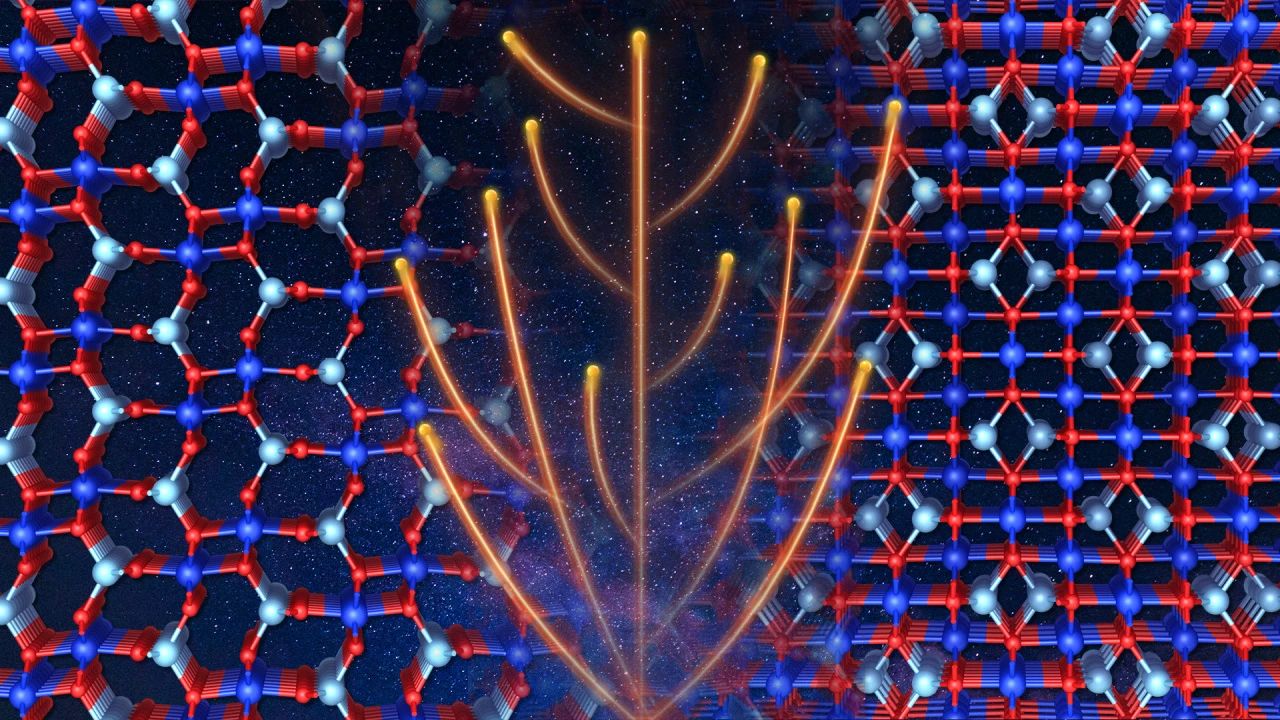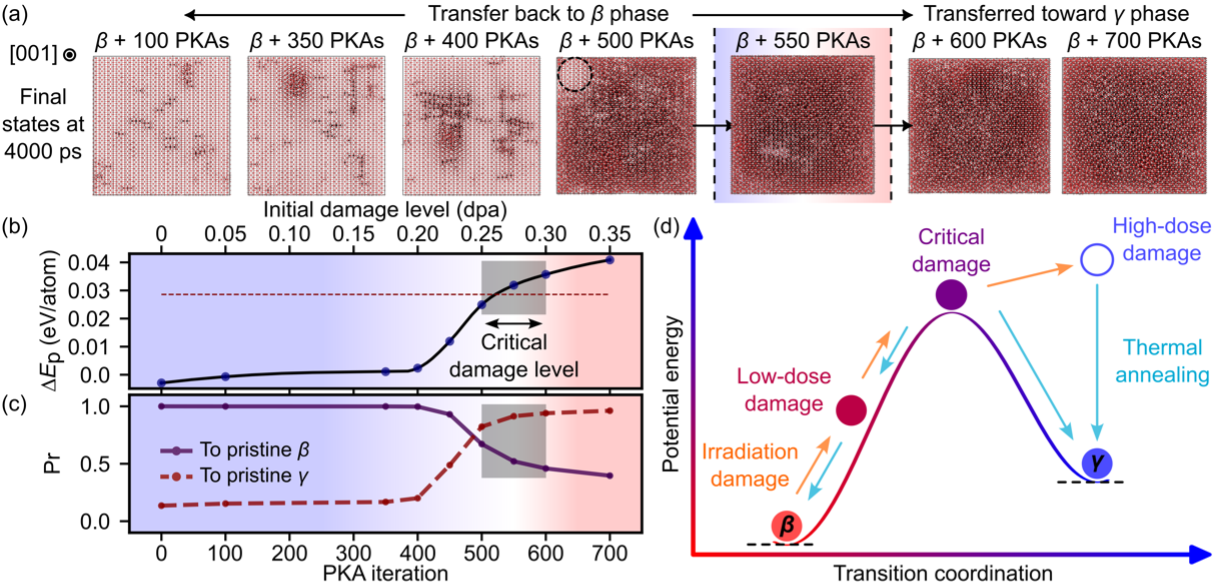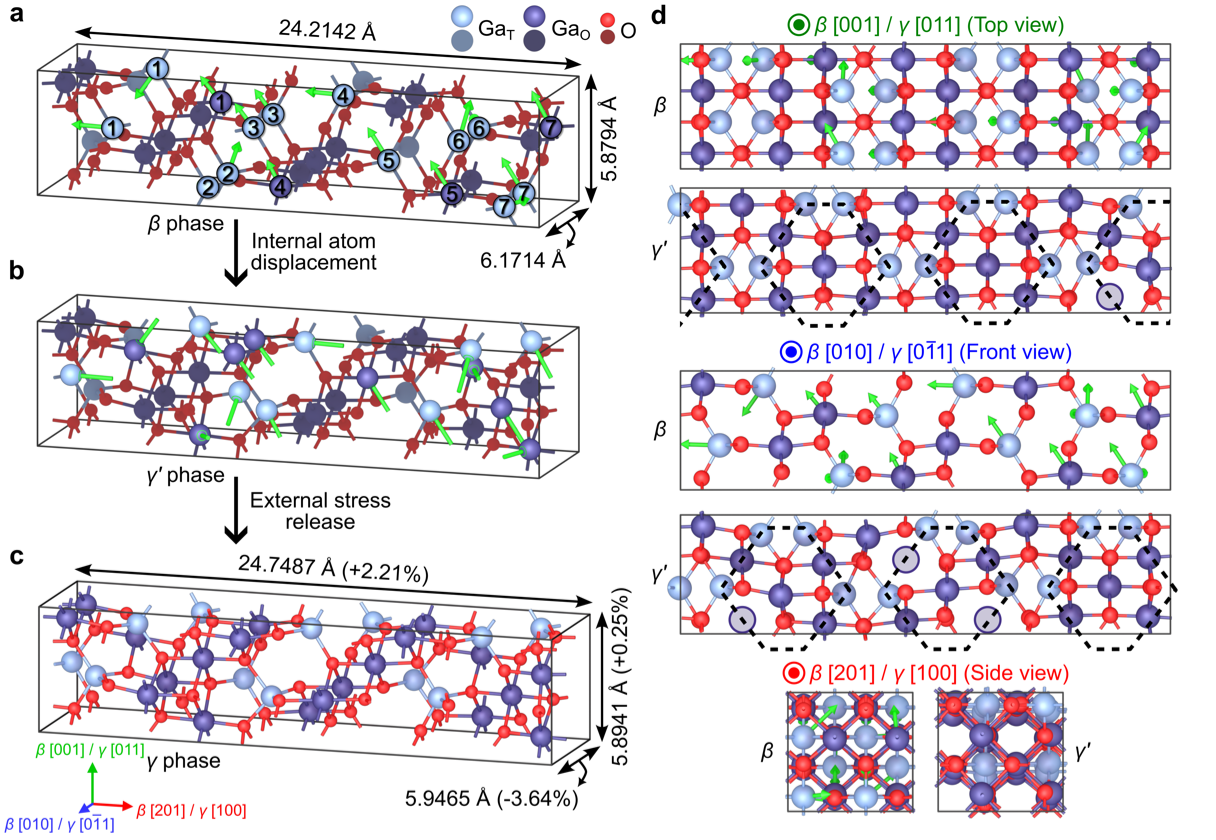

【Member Papers】Southern University of Science and Technology --- Crystallization Instead of Amorphization in Collision Cascades in Gallium Oxide
日期:2025-04-03阅读:470
Recently, the research group of Hua Mengyuan, associate professor in the Department of Electronic and Electrical Engineering of Southern University of Science and Technology, together with the research team of the University of Oslo and the University of Helsinki, revealed a new mechanism of the ordered phase transition of Gallium Oxide (Ga2O3) from stable to metastable oriented under the condition of high-energy ion beam irradiation. The research results were published in the international physics journal Physical Review Letters under the title " Crystallization Instead of Amorphization in Collision Cascades in Gallium Oxide ".

FIG. 1 The β phase Gallium Oxide underwent a β phase to γ phase lattice phase transition under high energy ion beam irradiation, which was regulated by disorder critical threshold
For a long time, it was thought that the structural evolution of semiconductor crystal materials under high dose bombardment of high-energy particles would directly lose the regular arrangement and form a disordered glassy state. However, this study found that when the internal atomic damage of the β phase Gallium Oxide reaches a critical threshold, its gallium atomic sublattices spontaneously recombine into metastable crystal structures through a specific short-range path. This phenomenon challenges the traditional understanding that "disorder inevitably leads to amorphization" and reveals the decisive role of dynamic paths in material phase transition. By cross-verifying large-scale atom-scale simulations and recent experiments, the research team proposed the concept of "disordered criticality" - when the atomic displacement exceeds this critical threshold, the system will preferentially choose metastable γ phase reconstruction with a shorter migration path, rather than complete disordering.

FIG. 2 Machine learn-driven molecular dynamics simulation: At low disorder levels, lattice damage can be quickly recovered by rapid migration of gallium atoms. On the contrary, when the accumulated lattice damage completely replaces the original β phase, the system reaches a critical level of disorder, and the gallium sublattice tends to shift kinetically to a metastable γ phase lattice.
By using the most advanced atomic resolution scanning transmission electron microscopy and machine learn-driven molecular dynamics simulation techniques, the research team accurately determined the disordered critical threshold that triggers the transition from β phase to γ phase, and detailed the complete atomic-level shortest migration path of the β phase to γ phase lattice transition in a periodic lattice system. Consisting mainly of short-range gallium atomic shifts and associated stress release.

FIG. 3 Mechanism explanation of the complete shortest atomic migration path from β phase to γ phase: This migration path significantly reduces the migration distance required for gallium atoms to reach locally stable lattice sites during atomic migration after irradiation damage
These results provide new ideas for the design of semiconductor materials and devices under extreme conditions. Gallium Oxide is the core material of a new generation of high-performance power semiconductors and deep ultraviolet detectors. The precise control of its crystal structure directly determines the device performance. By controlling the disorder of the material structure, the metastable multiphase material system that is difficult to be synthesized by traditional methods can be prepared in the future, and the efficiency and stability of electronic devices can be promoted. In addition, the proposed dynamic path selection mechanism is expected to be extended to the fields of radiation resistance such as nuclear reactor materials and aerospace protective coatings, laying a theoretical foundation for the development of materials in extreme environments.
Zhao Junlei, research Associate Professor in the Department of Electronics at Southern University of Science and Technology, is the first author of the paper, and Hua Mengyuan and Andrej Kuznetsov, professor at the University of Oslo, are co-corresponding authors of the paper. Southern University of Science and Technology is the first unit of the thesis. The research was funded and supported by the National Natural Science Foundation of China, the Basic and Applied Basic Research Foundation of Guangdong Province, and the Special Natural Science Foundation of Basic Research of Shenzhen City.
Links:
https://doi.org/10.1103/PhysRevLett.134.126101


